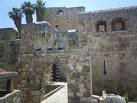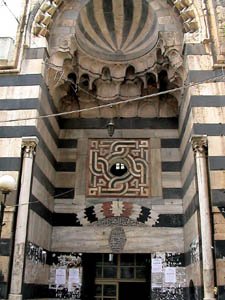
History of Tripoli
Tripoli (Trablos), 85 kilometers north of Beirut, has a special character all its own. Thanks to its historical wealth, relaxed lifestyle and thriving business climate, this is a city where modern and medieval blend easily into a lively and hospitable metropolis. Known as the capital of the North, Tripoli is Lebanon’s second largest city.
Forty-five buildings in the city, many dating from the 14th century, have been registered as historical sites. Twelve mosques from Mamluke and Ottoman times have survived along with an equal number of “madrassas” or theological schools. Secular buildings include the “hammam” or the bathing-house, which followed the classical pattern of Roman-Byzantine baths, and the “khan” or caravansary. The souks, together with the “khans”, form an agglomeration of various trades where tailors, jewelers, perfumers, tanners and soap-makers work in surroundings that have changed very little over the last 500 years.
Tripoli in History
Habitation of the site of Tripoli goes back to at least the 14th century B.C., but it wasn't until about the 9th century B.C. that the Phoenicians established a small trading station there. Later, under the Persians, it was home to a confederation of the Phoenician city states of Sidon, Tyre and Arados Island. Built on the trade and invasion route near the Abu Ali River, Tripoli's strategic position was enhanced by offshore islands, natural ports and access to the interior.
Under the successors of Alexander the Great during the Hellenistic period, Tripoli was used as a naval shipyard. There is also evidence that it enjoyed a period of autonomy at the end of Seleucid era.
Under Roman rule, starting with the takeover of the area by Pompey in 64-63 B.C., the Romans built several monuments here. The Byzantine city of Tripolis, which by then extended to the south, was destroyed, along with other Mediterranean coastal cities, by an earthquake and tidal wave in 551.
After 635, Tripoli became a commercial and shipbuilding center under the Omayyads. It achieved semi-independence under the Fatimid Dynasty when it developed into a center of learning.
At the beginning of the 12th century the Crusaders laid siege to the city, finally entering it in 1109. The conquest caused extensive destruction, including the burning of Tripoli's famous library, the Dar il-'ilm, with its thousands of volumes.
During the Crusaders' 180-year rule the city was the capital of the"County of Tripoli". But Crusader Tripoli fell in 1289 to the victorious Mamluke Sultan Qalaoun, who ordered the old port city (today Al-Mina) destroyed and a new built inland near the old castle. It was at this time that numerous religious and secular buildings were erected, many of which still survive today.
During the long Turkish Ottoman rule (1516 - 1918) Tripoli retained its prosperity and commercial importance and in these years more buildings were added to the city's architectural wealth.
Archeological Excavations
Tripoli has not been extensively excavated because the ancient site lies buried beneath the modern city of Al-Mina. However, a few accidental finds are now in museums. Excavations in Al-Mina revealed part of the ancient southern port quay and a necropolis from the end of the Hellenistic period. A sounding made in the Crusader castle uncover Late Bronze Age, Iron Age, Roman, Byzantine and Fatimid remains.
The Citadel
Overlooking the city is the imposing Citadel of Tripoli known as Qal’at Sinjil (Saint Gilles) which has been renovated and changed many times during its history.
Today the castle’s main features are an octagonal Fatimid constructions converted to a church by the Crusaders, some Crusader structures of the 12th-13th centuries, a number of 14th century Mamluke additions, as well as additions made by the Ottomans in the 16th century. The present state of this huge fortress (140 meters long and 70 meters wide) is largely the result of extensive restoration work by Mustafa Barbar Agha, governor of Tripoli at the beginning of the 19th century







 Baria Nabil Daye
Baria Nabil Daye
 Maher Melhem
Maher Melhem
